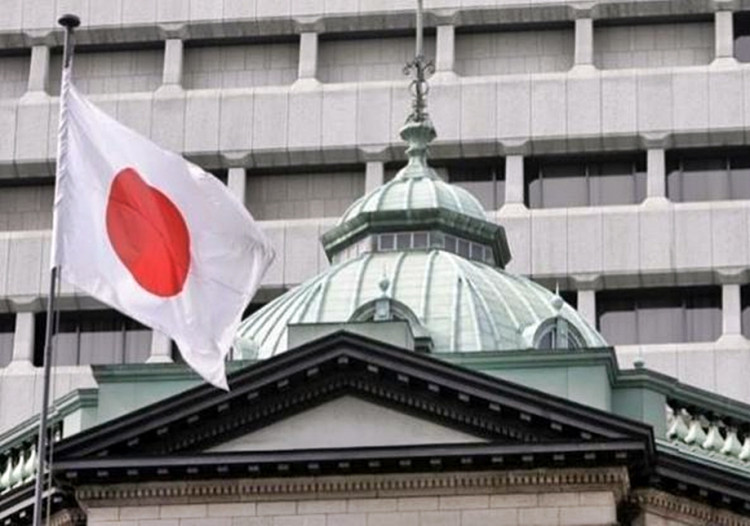On July 28, the Bank of Japan (BOJ) announced that it would flexibly implement its yield curve control (YCC) policy. The bank will adjust its control over the 10-year government bond yield, allowing it to fluctuate outside the 0% ±0.5% range. Meanwhile, to mitigate the impact on the bond market, the BOJ will adjust fixed-rate operations, purchasing 10-year Japanese government bonds at a rate of 1% every business day. This shift suggests that Japan is beginning to move away from its extremely relaxed monetary policy, but the approach remains cautious.
The BOJ's slight adjustment of the YCC policy, somewhat more than expected, becomes another stepping stone for adjusting global interest rates, which could significantly impact global capital market pricing.
With inflation in Japan noticeably increasing and lending rates low, companies will be greatly encouraged to invest and hire. Low-interest rates, coupled with rising inflation, suggest that companies can profit from almost any venture, stimulating domestic asset prices and further increasing inflation expectations.
While the BOJ has significantly lagged in its curve adjustment, we don't believe they will "catch up" in the short term. Due to the long-lasting relaxed monetary policy of 30 years, the bank's future tightening operations will likely be "fragmented" and "progressive." The implementation pace should be "reverse", i.e., first cancelling or changing the most recent relaxing measures and gradually progressing.
For the global capital market, the BOJ's "surprise" seems to suggest an increase in interest rates and a decrease in risk preference. While the market might initially struggle to adapt to the BOJ's tightening, the performance of the stock market is still more closely linked with the economy and the company itself. Thus, there's no need to overly focus on the "spillover effect" of the normalization of Japan's monetary policy.
More Flexible Yield Curve Control (YCC) Policy
On July 28, the Bank of Japan (BOJ) announced it would implement its yield curve control (YCC) policy more flexibly. According to BOJ documents, the bank will adjust its control of the 10-year government bond yield, allowing it to fluctuate outside of 0% ±0.5%. At the same time, to reduce the impact on bond market functionality, the BOJ will adjust its fixed-rate operations, buying 10-year Japanese government bonds at a rate of 1% every business day.
The BOJ's adjustment to the YCC policy, indicated in Figure 1, extends the policy's fluctuation range to 1%. However, considering the long-term low-interest rate environment, suddenly widening from 0.5% to 1% may cause significant market shock. Therefore, this adjustment will be gradual, and the BOJ will decide the specific adjustment pace and progress based on the situation.
A Stepping Stone in Global Interest Rate Adjustments
The BOJ's slight adjustment of the YCC policy, somewhat more than expected, becomes another stepping stone for adjusting global interest rates. This suggests that Japan will begin the process of normalizing monetary policy, which could significantly impact the pricing of the global capital market.
The BOJ's action seems "beyond expectations", but it's a necessary result of the basic economic operation. With the economy clearly recovering since the second half of last year and inflation beginning to rise, the BOJ is getting closer to achieving its 2% inflation target. With inflation noticeably increasing and lending rates low, companies will be encouraged to invest and hire, as low-interest rates, coupled with rising inflation, suggest that companies can profit from almost any venture. This will stimulate domestic asset prices in Japan, exacerbating inflation expectations. Looking at Japan's first quarter GDP data, corporate investment and consumer spending became the main drivers of the economy.
Overall, the adjustment of the BOJ's ultra-loose monetary policy is inevitable. However, the question arises whether, even with the adjustment of monetary policy, the BOJ can "catch up" in the short term.
The answer is negative. Given the long-lasting relaxed monetary policy of 30 years, the BOJ's future tightening operations will likely be "fragmented" and "progressive." The implementation pace should be "reverse", i.e., first cancelling or changing the most recent relaxing measures and gradually progressing.
At the same time, the transmission of monetary policy to the financial system also needs time and may face practical obstacles. Therefore, the BOJ is likely to lag behind the curve for a longer period. This suggests that the overall "overheating" trend of the Japanese economy won't fundamentally change due to the normalization of monetary policy.
For the global capital market, the BOJ's "surprise" seems to imply an increase in interest rates and a decrease in risk preference. However, the developed economies have already formed an upward trend in interest rates, and the tightening of monetary policy is merely a "confirmation" and not an "exogenous variable" driving its rise. Therefore, while the market might initially struggle to adapt to the BOJ's tightening, the performance of the stock market is still more closely linked with the economy and the company itself. Hence, there's no need to overly focus on the "spillover effect" of the normalization of Japan's monetary policy.






